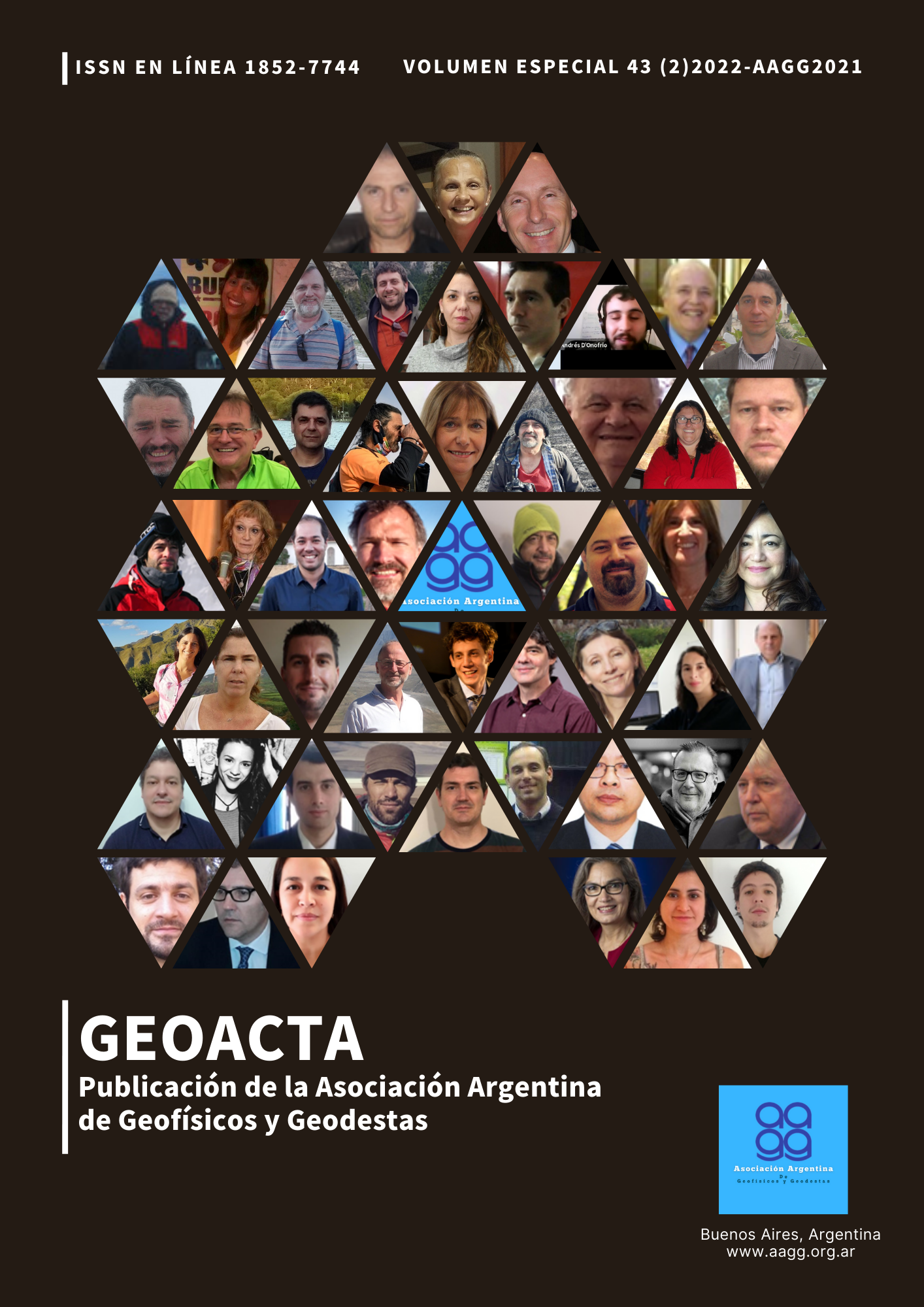GNSS permanent stations, a great paradigm in Geodesy
A look from Argentina and Latin America, in the last 30 years
Keywords:
POSGAR, SIRGAS, Estaciones permanentes, GNSS, RAMSAC, ArgentinaAbstract
In the last 30 years, Geodesy has evolved by leaps and bounds, influenced by the knowledge that satellite geodesy has mainly contributed. In a review of the last 30 years we identified a paradigm shift in “positioning”. A new expression “Georeferencing” has emerged and has been installed in society. For coordinate users, it required a phase of adaptation and accelerated training. The technology of Satellite Positioning Systems was imposed in the 90's, not having the necessary basic infrastructure, nor with trained human resources for its efficient use.
Standing at this moment in time, the year 2021, we remember and try to write that past story, that transition stage that it was necessary to experience. We have tried to leave a legacy in honor of those who preceded us and necessary for the knowledge of coordinate users to come.
This contribution presents a specific view of what was the evolution of the geodetic infrastructure, focused on the Argentine Republic and its participation in the continental and international context. Accompanying this history, they have tried to expose the human resources training processes that allowed specialists to update themselves to face the planning, survey and calculation tasks that the new satellite positioning technologies demand.
Downloads
References
Bosy, J. Global, Regional and National Geodetic Reference Frames for Geodesy and Geodynamics. Pure Appl. Geophys. 171, 783–808 (2014). https://doi.org/10.1007/s00024-013-0676-8
Brunini, C.; Azpilicueta, F.; Gende, M.; Aragón Ángel, A.; Hernández Pajares, M.; Juan, J. M.; Sanz, J. (2009). Toward a SIRGAS service for mapping ionosphere electron density. IAG Symposia 136: 753-760.
Drewes, H. y Sánchez, L. (2017). Velocity model for SIRGAS 2017: VEMOS2017, Technische Universitaet Muenchen, Deutsches Geodaetisches Forschungsinstitut (DGFI-TUM), IGS RNAAC SIRGAS
Gómez, DD, Piñón, DA, Smalley, R. et al. Acceso al marco de referencia bajo los efectos de grandes terremotos: un enfoque de colocación de mínimos cuadrados para la evolución post-sísmica no secular. J Geod 90, 263–273 (2016). https://doi.org/10.1007/s00190-015-0871-8
Mackern M.V., Mateo M.L., Camisay M.F., Morichetti P.V. (2020). Tropospheric Products from High-Level GNSS Processing in Latin America. International Association of Geodesy Symposia Series, Vol 152, open access, doi: 10.1007/1345_2020_121
Mendoza, L. P. O., Meza, A. M. y Aragón Paz, J. M. (2019). A multi-GNSS, multi-frequency and near real-time ionospheric TEC monitoring system for South America", Space Weather, 17, https://www.doi.org/10.1029/2019SW002187
Moirano J., Brunini C., Drewes H., Kaniuth K. (1998). Realización de un sistema geodésico de referencia en Argentina en conexión con SIRGAS. Serie de Simposios de la Asociación Internacional de Geodesia; Springer, Berlín, Heidelberg; vol. 118:199-204, https://doi.org/10.1007/978-3-662-03714-0_32
Natali M., Brunini C., Kaniuth K., Drewes H. (2002). Monitoreo de puntos de referencia de mareógrafos en Argentina por GPS. Serie de Simposios de la Asociación Internacional de Geodesia; Springer, Berlín, Heidelberg, vol. 124:255-258, https://doi.org/10.1007/978-3-662-04683-8_48
Downloads
Published
How to Cite
Issue
Section
License

This work is licensed under a Creative Commons Attribution-NonCommercial-ShareAlike 4.0 International License.
Starting in 2022 (Vol. 43 number 2) articles will be published in the journal under a Creative Commons Attribution-NonCommercial-ShareAlike 4.0 International license (CC BY-NC-SA 4.0)
According to these terms, the material can be shared (copied and redistributed in any medium or format) and adapted (remixed, transformed and created from the material another work), provided that a) the authorship and the original source of its publication (journal and URL of the work), b) is not used for commercial purposes and c) the same license terms are maintained.
Prior to this date the articles were published in the journal under a Creative Commons Attribution license (CC BY)
In both cases, the acceptance of the originals by the journal implies the non-exclusive assignment of the economic rights of the authors in favor of the editor, who allows reuse, after editing (postprint), under the license that corresponds according to the edition.
Such assignment means, on the one hand, that after its publication (postprint) in the GEOACTA Magazine of the Association of Geophysicists and Geodesists, the authors can publish their work in any language, medium and format (in such cases, it is requested that it be recorded that the material was originally published in this journal); on the other, the authorization of the authors for the work to be harvested by SEDICI, the institutional repository of the National University of La Plata, and to be disseminated in the databases that the editorial team considers appropriate to increase visibility. of the publication and its authors.
Likewise, the journal encourages the authors so that after their publication in the Journal of the Association of Geophysicists and Geodesists, they deposit their productions in other institutional and thematic repositories, under the principle that offering society scientific production and Unrestricted academic scholarship contributes to a greater exchange of global knowledge.
















